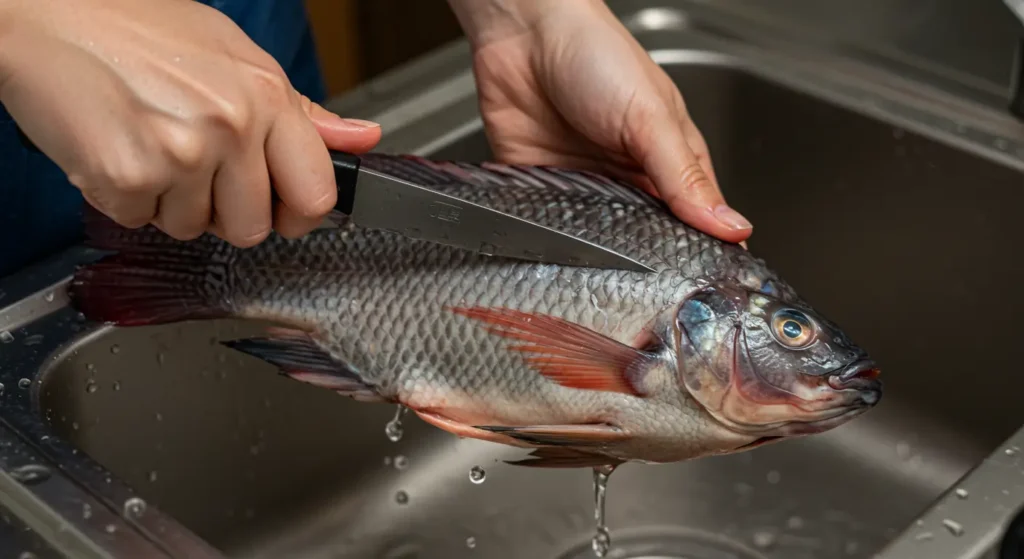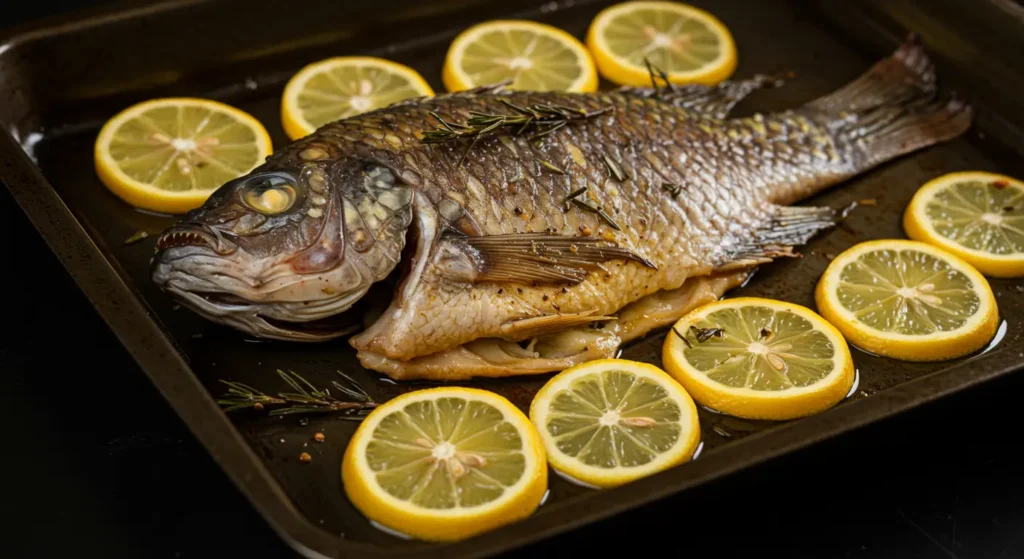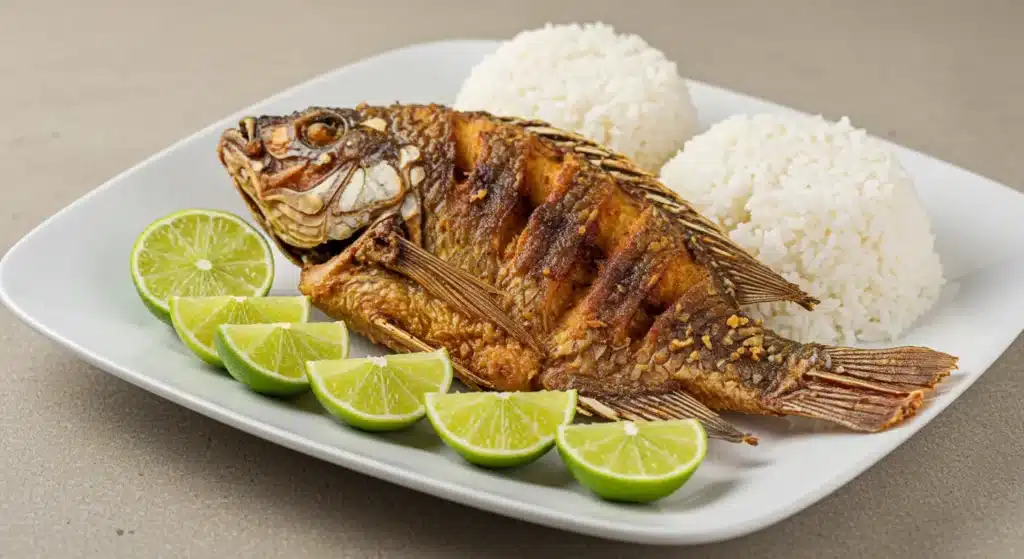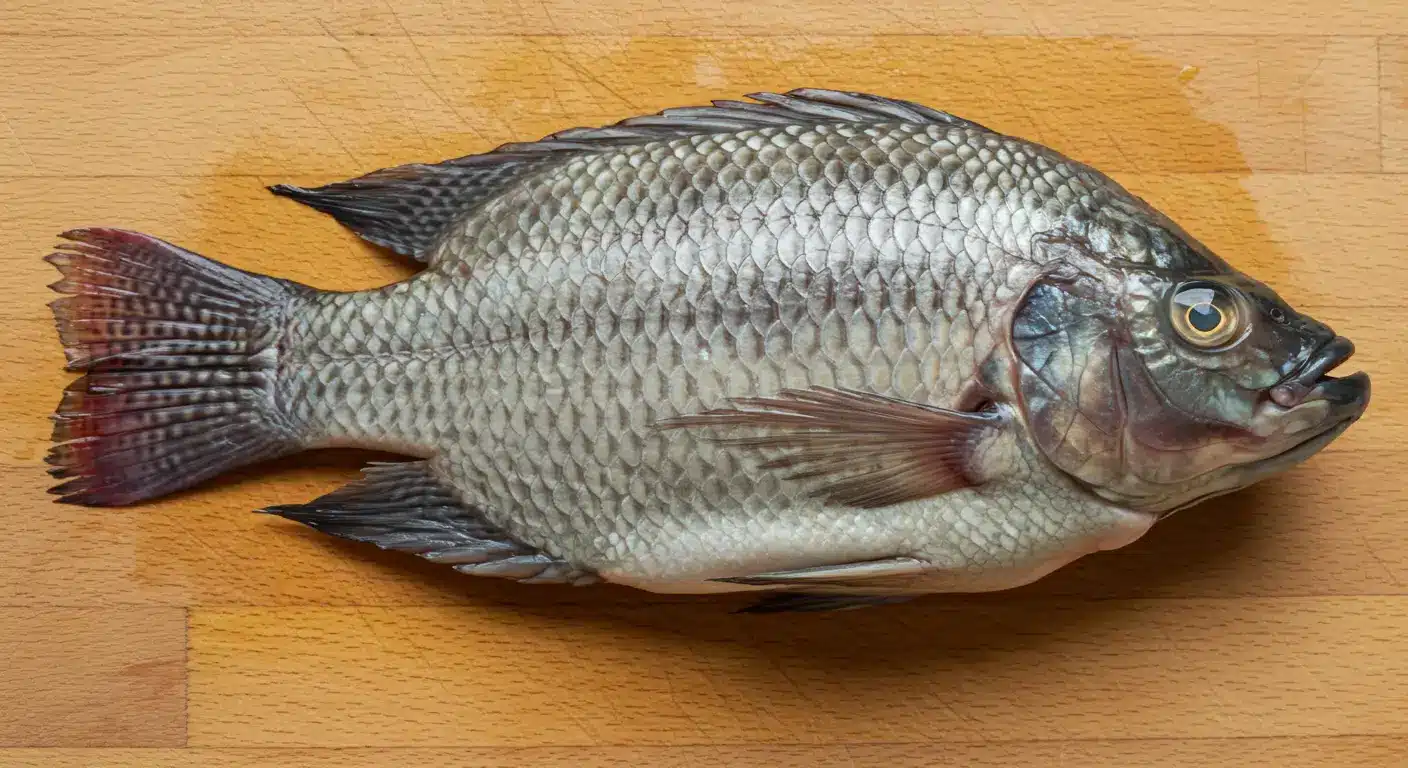Whole Tilapia: The Ultimate Guide to Buying, Cooking & Enjoying It
Whole tilapia is one of the most versatile and budget-friendly fish you can find. Whether you’re baking, frying, or grilling, this mild-flavored fish adapts beautifully to various cooking styles. In this in-depth guide, you’ll discover why whole tilapia is a smart choice, how to prep and cook it perfectly, and what makes it a staple in many kitchens worldwide.
Table of Contents
Understanding Whole Tilapia and Its Culinary Appeal
What Is Whole Tilapia and Why It’s Popular
Whole tilapia means the fish is fully cleaned and gutted, yet still has its head and skin. Unlike fillets, whole tilapia offers a more flavorful experience thanks to its bones and skin, which help retain moisture during cooking. It’s commonly found in global cuisines, from African stews to Asian grills.
Its appeal lies in its mild, slightly sweet taste and ability to absorb marinades and seasonings well. It’s ideal for both beginner cooks and culinary pros.
Looking for inspiration? Try these easy fish food recipes to expand your seafood menu.
Nutritional Value and Health Benefits of Whole Tilapia
Tilapia is rich in protein and low in fat, making it an excellent source of lean meat. A 3.5-ounce serving provides around 26 grams of protein with just 128 calories.
It’s also packed with essential nutrients like vitamin B12, selenium, and phosphorus. Although lower in omega-3 than fatty fish like salmon, tilapia still supports heart and brain health when part of a balanced diet.
Check out this irresistible salmon belly recipe if you want to compare nutritional value with other fish options.
Is Whole Tilapia Good? Unpacking Its Pros and Cons
Why Whole Tilapia Is a Great Protein Choice
Whole tilapia is a standout in the seafood section for a reason. It’s high in lean protein, making it excellent for muscle building, weight management, and low-carb diets. Plus, it’s easy to prepare in large portions, ideal for families or meal prep.
Tilapia also cooks quickly, whether roasted, steamed, or grilled, without needing complicated methods. That makes it perfect for busy home cooks who want quick, healthy meals without sacrificing flavor.
The fish’s mild taste makes it a blank canvas—perfect for bold spices, citrusy marinades, or classic garlic-butter combos.
Common Concerns and Myths About Tilapia
Despite its popularity, tilapia has sparked debate—mostly due to farming practices. But here’s the deal: farmed tilapia from certified sources is safe and nutritious. Look for products with certifications like ASC (Aquaculture Stewardship Council) or BAP (Best Aquaculture Practices).
One common myth is that tilapia contains little to no nutrition. That’s false. It provides a good amount of protein, B vitamins, and essential minerals such as selenium.
Another misconception is that it’s a “bottom feeder.” In reality, most farmed tilapia are fed a controlled, plant-based diet. Clean farming operations result in fresh, high-quality fish.
Looking for alternatives? Explore our baked orange roughy recipe for another healthy seafood option.
Buying Whole Tilapia – What You Need to Know
Does Costco Sell Whole Tilapia? Exploring Availability
Yes, Costco often sells whole tilapia—both fresh and frozen—depending on your region. You’ll typically find it in the seafood freezer section, vacuum-sealed for freshness. It’s usually sourced from certified farms, ensuring quality and sustainability.
Shopping at wholesale stores like Costco is also cost-effective. Buying in bulk brings the price per pound down, making tilapia an even better value. If you’re unsure, check with your local Costco or browse their online seafood selection.
You can also look at ethnic markets or fishmongers, which often carry whole tilapia at competitive prices and sometimes even offer custom cleaning.
How to Choose Fresh Whole Tilapia at the Market
When buying whole tilapia, freshness is key. Look for clear, bulging eyes and shiny, firm skin. The gills should be bright red—not brown or slimy. A fresh tilapia won’t have a strong “fishy” smell; it should smell like clean water or the ocean.
Lightly press the fish; if the flesh springs back, it’s a sign of freshness. If it leaves an indentation, skip it. Whole fish should feel heavy for their size and have no visible bruising.
Want something unique? Learn more about this delicious crab brulee recipe for another seafood experience worth trying.
Preparing Whole Tilapia for Cooking

Cleaning and Gutting: Step-by-Step Prep Guide
Before you cook whole tilapia, you’ll need to clean and gut it properly. Most stores offer pre-cleaned options, but if you’re doing it yourself, here’s a fast and safe method:
- Scale the Fish: scrape from the tail toward the head using a scaler or the back of a knife. Rinse thoroughly.
- Cut and Gut: Insert a knife or kitchen shears into the belly, from tail to gills. Remove the guts, being careful not to puncture organs.
- Rinse Again: Rinse under cold water, removing all blood and debris. Pat dry with paper towels.
Clean fish ensures better flavor and reduces that “muddy” taste some people associate with poorly prepared tilapia.
What Do You Soak Tilapia in Before Cooking?
Soaking whole tilapia before cooking helps eliminate any mild fishy odor and can enhance flavor. The most effective soak options include:
- Lemon water: 1 quart water + juice of 1 lemon. Soak 15 minutes.
- Milk soak: Especially useful for neutralizing odor and tenderizing the flesh. Use plain milk for 10–15 minutes.
- Saltwater brine: A quick 10-minute soak in saltwater (1 tbsp salt per quart) can help firm the flesh and season it lightly.
These methods are safe and natural, giving your fish a fresher profile and better texture.
Looking for ideas beyond tilapia? Check out this delicious smoked salmon brine recipe for another soaking method with bold flavor results.
Cooking Whole Tilapia to Perfection
How to Cook Whole Tilapia Fish: Methods and Tips
Cooking whole tilapia is easier than most people think. Its skin crisps up beautifully, while the bones help keep the flesh moist and flavorful. Here are the most popular cooking methods:
- Baking: Preheat oven to 400°F. Stuff the cavity with lemon, garlic, and herbs. Rub olive oil and spices over the skin. Bake uncovered for 25–30 minutes. This method delivers juicy, hands-off results.
- Grilling: Score the skin to prevent curling. Brush with oil and season. Grill on medium heat, about 6–8 minutes per side. Use a grill basket to keep it from sticking or falling apart.
- Frying: For a crispy finish, dust in seasoned flour or cornmeal and deep-fry at 350°F. Fry 4–5 minutes per side until golden brown.
- Steaming: Wrap with ginger and soy sauce in foil or banana leaf, and steam for 15–20 minutes. Ideal for delicate flavor profiles and moisture retention.
Score the fish (light cuts across the body) before cooking to let spices penetrate and cook more evenly.

Is It Better to Cook Tilapia in the Oven or Pan?
Both methods are solid, but your choice depends on texture and time:
- Oven: Best for moist, even cooking with minimal oil. Ideal for large batches and stuffed preparations.
- Pan-fry: Delivers crisp skin and intense flavor. Perfect for quick, single-portion meals but requires attention and oil management.
If you’re aiming for a healthy meal with less cleanup, bake it. For a restaurant-style sear and crunch, pan-fry it.
Whole Tilapia Recipes for Every Palate
Baked Whole Tilapia with Herbs and Garlic
This is the go-to recipe for busy weeknights or a flavorful Sunday dinner. Preheat your oven to 400°F. Rinse and pat the fish dry. Stuff the cavity with lemon slices, rosemary, garlic cloves, and a few sprigs of thyme.
Rub the skin with olive oil, paprika, salt, and pepper. Place it on a lined baking tray and roast uncovered for about 25–30 minutes or until the flesh flakes easily with a fork.
Serve it with roasted vegetables or a side of herbed rice for a balanced, filling meal.
Crispy Fried Whole Tilapia with Spices
For those who love a golden, crispy finish, fried whole tilapia is the way to go. Clean and pat dry the fish thoroughly. Make diagonal slits on both sides and rub in a mix of turmeric, garlic powder, chili powder, and salt.
Heat oil in a deep skillet until hot (350°F). Gently lower the fish and fry for 4–5 minutes per side. Drain on paper towels and sprinkle with lime juice.
Serve with plantains or slaw for a Caribbean twist that’s irresistibly good.
Explore more flavor-forward ideas with our easy fish food recipes made for every palate and cooking level.
Serving Suggestions and Meal Pairings
Best Side Dishes to Serve with Whole Tilapia
Pairing whole tilapia with the right side dishes elevates your meal from simple to memorable. Here are top combinations:
- Coconut rice or jasmine rice: Adds a fragrant, slightly sweet base that complements tilapia’s mild flavor.
- Garlic sautéed spinach or kale: Provides a bold contrast and adds nutrients.
- Roasted sweet potatoes: Their natural sweetness balances well with spicy or citrusy tilapia.
- Simple cucumber salad: A refreshing, crunchy side that keeps things light.
You can also serve it with steamed vegetables, quinoa, or couscous for healthy, well-rounded options.
Discover great ideas like this baked orange roughy recipe for more fish-friendly sides and flavor inspiration.

Tilapia in International Cuisines: Caribbean, Asian, African Twists
Whole tilapia is popular worldwide—and every region has a delicious spin:
- Caribbean-style: Fried or grilled with jerk seasoning, served with rice and peas or plantains.
- Asian-inspired: Steamed with ginger, soy, sesame oil, and scallions.
- West African flavors: Grilled tilapia with hot pepper sauce and cassava or jollof rice.
- Latin American: Baked tilapia with citrus, cumin, and bell peppers for a zesty, colorful dish.
These variations bring out the fish’s versatility and work with pantry-friendly ingredients.
Check out our irresistible salmon belly recipe if you enjoy globally inspired seafood dishes.
Is Tilapia an Expensive Fish? Budgeting for Fish Lovers
Price Comparison: Tilapia vs. Other Popular Fish
Tilapia is known as one of the most budget-friendly fish options available. On average, whole tilapia costs between $2 to $4 per pound, depending on location and source (fresh vs. frozen). Compared to other popular fish:
| Fish Type | Average Price per Pound |
|---|---|
| Whole Tilapia | $2 – $4 |
| Salmon (fillets) | $8 – $12 |
| Sea Bass | $10 – $15 |
| Cod (fillets) | $7 – $11 |
As you can see, tilapia is often less than half the price of premium fish like salmon or sea bass—making it perfect for large families, meal preppers, and budget-conscious home cooks.
Tips for Saving Money When Buying Whole Tilapia
Here’s how to stretch your grocery budget further while enjoying high-quality tilapia:
- Buy frozen in bulk: Stores like Costco and Sam’s Club offer value packs that freeze well and cook beautifully.
- Shop international markets: Local Asian or Latin grocery stores often have whole tilapia at competitive prices.
- Look for sales and discounts: Supermarkets regularly discount fish nearing its sell-by date. If it looks and smells fresh, grab it and freeze.
- Go whole, not fillets: Whole tilapia is cheaper than pre-cut fillets and gives you more options for cooking.
Learn more about unique seafood meals like our delicious crab brulee recipe if you want to experiment with upscale dishes on a budget.
Storage, Leftovers, and Reheating Tips
How to Store Raw and Cooked Whole Tilapia
Proper storage preserves freshness and flavor. For raw whole tilapia, follow these steps:
- Refrigerator: Store in the coldest part, ideally at 32–34°F. Wrap tightly in plastic wrap or butcher paper. Use within 1–2 days.
- Freezer: For longer storage, wrap in freezer-safe plastic and place in an airtight bag. Label and freeze up to 6 months.
For cooked tilapia:
- Refrigerate leftovers within 2 hours. Store in airtight containers for up to 3 days.
- Always keep the fish in the back of the fridge where it’s coldest.
If you’re batch-cooking, consider freezing individual portions for quick meals later. Tilapia holds up well when frozen and reheated properly.
Best Ways to Reheat Without Losing Flavor
To keep tilapia moist and flavorful, avoid the microwave when possible. Here are better methods:
- Oven: Preheat to 275°F. Wrap tilapia loosely in foil and heat for 10–12 minutes. Pour in a bit of water or lemon juice to help keep it moist.
- Stovetop: Reheat in a covered skillet on low heat with a bit of oil or broth for 5–7 minutes.
- Microwave (if rushed): Place tilapia in a microwave-safe dish, cover with a damp paper towel, and heat for 1–2 minutes at 50% power.
Avoid overcooking. When tilapia turns rubbery, it’s usually a sign of too much heat.
Conclusion: Why Whole Tilapia Deserves a Spot on Your Table
Whole tilapia is a flavorful, nutritious, and economical fish that suits all types of meals—from weeknight dinners to festive occasions. Its versatility in cooking styles, mild flavor, and quick prep make it a top choice for health-conscious eaters and busy home cooks alike.
Don’t miss our guide to making a crispy and flavorful irresistible salmon belly recipe.
FAQs
Is whole tilapia good?
Absolutely. Whole tilapia is a nutrient-dense, affordable fish that’s easy to cook. Its mild flavor pairs well with a variety of spices and marinades, and when cooked whole, the skin and bones help seal in flavor and moisture.
Does Costco sell whole tilapia?
Yes, Costco often stocks whole tilapia, both fresh and frozen. Availability varies by region, but it’s typically located in the frozen seafood section and offers bulk pricing for budget-conscious shoppers.
Is tilapia an expensive fish?
Not at all. Tilapia is one of the most cost-effective fish choices, often priced between $2 and $4 per pound. It’s cheaper than salmon, cod, or sea bass, making it an excellent protein option for families.
How to cook whole tilapia fish?
Whole tilapia can be baked, grilled, pan-fried, or steamed. Simply clean the fish, score it, season it, and cook at high heat for the best flavor and texture. Baking at 400°F for 25–30 minutes is one of the easiest and healthiest methods.
Is it better to cook tilapia in the oven or pan?
Both are great. Oven baking is healthier and easier, while pan-frying delivers crispier skin and bolder flavors. Choose based on your time, tools, and taste preferences.
What do you soak tilapia in before cooking?
To reduce odor and improve flavor, soak tilapia in lemon water, vinegar water, milk, or a saltwater brine for 10–15 minutes before cooking.

